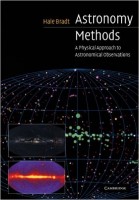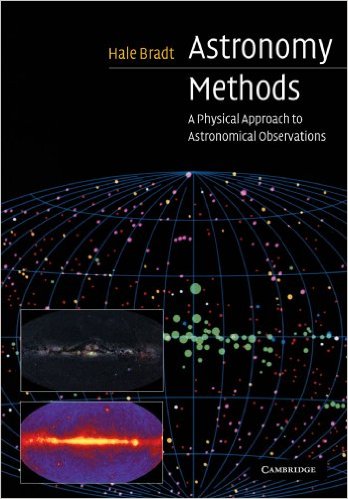 Author: Hale Bradt, PhD
Author: Hale Bradt, PhD
Publisher: Cambridge University Press – 433 pages
Book Review by: Venkat Subramaniam
Many members of the general public are not only interested in, but are fascinated by astronomy. Ask them and they will tell you that they love to see photos of the planets, stars and galaxies in large, colorful astronomy books. I know that as kid, I was bewildered at seeing those pictures, and I still am, when seeing them on the Internet these days.
This book is certainly accessible (readable and understandable) enough to be appreciated by the public, but it is has been developed for use by college undergraduates. As a matter of fact, it evolved from notes the author used in teaching physical and analytical astronomy to a class of such students at Massachusetts Institute of Technology.
At the outset, Hale Bradt describes in general in the Preface, how the student can best benefit from this book. He writes: “this volume presents methods, tools, and phenomena of astronomy that the science undergraduate should incorporate into his or her knowledge prior to or during the practice and study of quantitative and analytical astronomy and astrophysics.”
The coverage of this book is quite extensive, and it deals with a wide range of diverse topics on the various branches of astronomy, as we show you in the list of chapters below, to give you a broad overview:
- Astronomy through the centuries
- Electromagnetic radiation
- Coordinate systems and charts
- Gravity, celestial motions and time
- Telescopes
- Detectors and statistics
- Multiple telescope interferometry
- Point-like and extended sources
- Properties and distances of celestial objects
- Absorption and scattering of photons
- Spectra of electromagnetic radiation
- Astronomy beyond photons
The author uses an approach that is introductory and is based upon physical considerations. He points out that this volume has been created primarily for advanced undergraduate science students who are new to astronomy. It is also serves as a useful introduction for graduate students or postdoctoral researchers who are “encountering the practice of astronomy for the first time.”
He points out that those who remember their advanced high school mathematics, including algebra and trigonometry, will better understand some quantitative and analytical portions of this book. Among the topics discussed in this book are:
- Astronomical detectors including CCDs
- Atmospheric absorption
- Basic statistics
- Broadband and line spectra
- Calendar and time systems
- Celestial coordinate systems
- Determination of masses, temperatures and distances of celestial objects
- Eclipses
- Interferometry to improve angular resolution
- Motions of celestial objects
- Processes that absorb and scatter photons in the interstellar medium together with the concept of cross-section
- Quantitative aspects of the electromagnetic spectrum
- Radiation from point and extended sources
- Speckle interferometry and adaptive optics to overcome atmospheric jitter
- Techniques used in neutrino, cosmic x-ray and gravitational-wave astronomy
- Telescopes in all wavebands
- Transport of radiation through matter to form spectral lines
- Two-space gamma ray experiments
And extensive use of charts, formulas, photos, sketches, tables and other graphics are used in this book to illustrate concepts to the reader and to promote comprehension and lead to better understanding. The large number and variety of materials in this book, and their skillful presentation, make this is a very helpful and useful book.
Author:
Hale Bradt, PhD is Professor Emeritus of Physics at the Massachusetts Institute of Technology. Over his forty years on the faculty, he carried out research in cosmic ray physics and x-ray astronomy, while teaching courses in physics and astrophysics.
Dr. Bradt founded the MIT sounding rocket program in x[ray astronomy, and was a senior or principal investigator on three NASA missions for x-ray astronomy. He was awarded the NASA Exceptional Service Medal for his contributions to HEAO-1 (High Energy Astronomical Observatory 1).
He also received the 1990 Buechner Teaching Prize of the MIT Physics Department, and shared the 1990 Bruno Rossi prize of the American Astronomical Society for his contributions to the RXTE (Rossi X-ray Timing Explorer) program.
He is the author of another book allied to this, Astrophysics Processes: The Physics of Astronomical Phenomena and a three-volume memoir about his father Wilber and his family’s struggles in the 1940s entitled Wilber’s War: An American Family’s Journey through World War II, that was reviewed in BIZ INDIA Online News: http://www.bizindia.net/book-review-wilbers-war-an-american-familys-journey-through-world-war-ii-trilogy.







